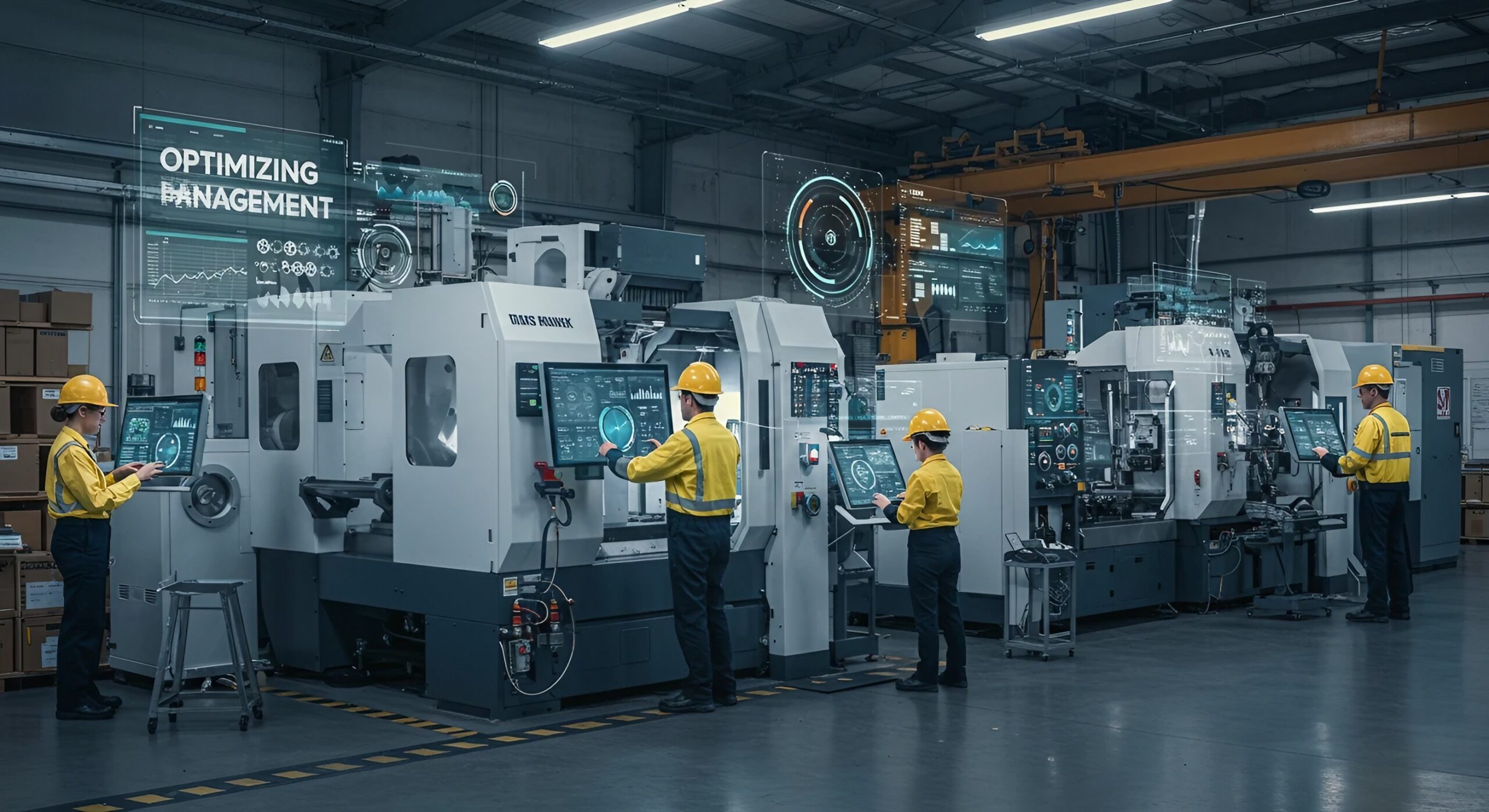Discover how AI-powered content recommendations can boost engagement, sales, and customer satisfaction for SMEs. Learn how AI algorithms tailor content and drive growth effectively.
Did you know that over 80% of the content people watch on platforms like Netflix comes from recommendations driven by artificial intelligence (AI)? This may seem surprising, considering how vast and varied the content libraries are. Yet, AI has become a powerful tool for personalising the user experience, and this same technology can work wonders for your business. If you’re a decision-maker in a small or medium-sized enterprise (SME), AI-powered content recommendations can be a game-changer for engaging your audience and boosting conversions.
The Power of Personalisation in the Digital Age
In today’s fast-paced, digital-first world, customers expect content that speaks directly to their interests and needs. Generic content simply isn’t enough anymore. People want relevant, tailored experiences that feel personal and thoughtful—whether it’s an article, a video, or a product recommendation. This is where AI-powered content recommendations come into play. These tools analyse user data to suggest content that not only matches past behaviours but also anticipates what your audience wants next.
For instance, think about the way ASOS uses AI. By analysing a shopper’s previous interactions—what they’ve browsed, bought, or even left in their basket—AI-powered content recommendations predict and suggest products they might like, increasing the chances of a sale. It’s no longer just about offering a wide range of content; it’s about offering the right content to the right person at the right time.
How Do AI Algorithms Work?
AI-powered content recommendations rely on a process called machine learning (ML). At a basic level, these algorithms learn from user behaviour and make predictions based on patterns. Here’s how it works in practice:
First, the algorithm collects data on user interactions, such as clicks, views, likes, or purchases. This information helps build a profile of individual preferences and behaviours. Next, using this data, the algorithm identifies patterns and makes connections. For example, if a user frequently watches tech tutorials, the algorithm may recognise a preference for tech-related content.
Once the patterns are identified, AI-powered content recommendations filter and suggest content that aligns with the user’s profile. This might include articles, videos, or products they are likely to find interesting based on their past actions. Finally, one of the strengths of AI is its ability to continually learn. With every interaction, the algorithm refines its recommendations to become more accurate and relevant.
In essence, AI-powered content recommendations are constantly working behind the scenes, analysing data and refining suggestions in real-time, creating an increasingly personalised experience for users.
Practical Benefits for SMEs
For SMEs, AI-powered content recommendations offer a number of practical advantages. One of the most significant is enhanced customer engagement. By delivering personalised content, you capture your audience’s attention and keep them coming back for more. Whether it’s recommending blog posts, videos, or products, personalisation keeps users engaged longer, increasing the likelihood of conversion.
In the realm of e-commerce, AI-powered content recommendations can also drive more sales. Just like Amazon, which suggests products based on previous purchases, your business can use AI to recommend products to customers, boosting cross-sells and upsells. The more relevant the suggestions, the more likely customers are to make a purchase.
Furthermore, personalising content makes customers feel valued. Offering an experience tailored to their preferences increases customer satisfaction and builds trust in your brand. When customers feel understood and catered to, they are more likely to return and engage with your business again. It’s like having a personal shopping assistant guiding them through your offerings, making the experience feel much more exclusive.
Lastly, AI-powered content recommendations provide valuable insights into customer preferences, behaviours, and trends. By leveraging this data, you can make informed decisions about your content strategy, ensuring you are always one step ahead in meeting your audience’s evolving needs.
Real-World Examples of Personalised Content Recommendations
Let’s look at a few examples of how AI-powered content recommendations are already making waves in personalising content:
For example, streaming services like Netflix and Spotify rely on AI-powered content recommendations to suggest content based on your viewing or listening history. When you log in, you’re greeted with suggestions tailored to your preferences, from new TV shows to songs you may enjoy. This model can easily be applied to other types of content, such as blog posts, webinars, or product videos, ensuring that your audience is always offered something relevant.
Online learning platforms like Coursera or Udemy use AI-powered content recommendations to suggest courses based on previous activity or interests. If you’re running an online training programme, AI can recommend the next course a user might want to take, increasing engagement and course completion rates.
E-commerce platforms like ASOS or Amazon recommend products based on a customer’s browsing and purchase history. This personalisation drives more sales by suggesting items the customer is most likely to purchase, often boosting the average order value. Similarly, SMEs with online stores can implement AI-powered content recommendations to increase conversions and improve customer satisfaction. Read more about AI-driven solutions for SMEs to stay ahead of the curve.
Challenges to Keep in Mind
While the benefits of AI-powered content recommendations are clear, there are some challenges that SMEs should be mindful of. One of the biggest concerns is data privacy. Collecting and using customer data requires careful attention to privacy laws and regulations, such as the GDPR in the UK. Ensuring that your customers are aware of how their data is being used and providing them with control over it is essential to building trust.
Additionally, the quality of the data being used is critical. AI-powered content recommendations are only as effective as the data they are based on. If the data is incomplete, inaccurate, or biased, the recommendations could fall short. Ensuring the data you collect is clean and reliable is key to making AI work for your business.
Lastly, while AI can be highly effective, the cost of implementing AI-powered content recommendations systems can be a barrier for some SMEs. However, there are affordable, scalable solutions available, such as SaaS platforms, which offer AI-powered tools without the need for custom development.
Getting Started with AI Content Recommendations
If you’re ready to incorporate AI-driven content recommendations into your business, the first step is to define your goals. What do you want to achieve with personalisation? Whether it’s boosting engagement, increasing sales, or improving customer retention, a clear objective will help guide your strategy.
Next, it’s important to choose the right tools. There are a variety of AI-powered recommendation engines available, ranging from user-friendly SaaS platforms to more sophisticated, custom solutions. Starting with a solution like Google Cloud AI or Amazon Personalize can give you access to powerful AI capabilities without needing extensive technical expertise.
It’s also wise to start small. Begin by applying AI to a specific area of your business, such as recommending related blog posts or products. Monitor the results, refine your approach, and gradually scale up as you see improvements. Finally, ensure that you are continually monitoring and adjusting your recommendations based on performance data, so you can keep refining the AI’s accuracy.
Conclusion
As we’ve seen, AI-powered content recommendations are a powerful way to personalise user experiences, increase engagement, and boost sales. By analysing user data, AI can predict what your audience wants and deliver content tailored specifically to them. For SMEs, this technology presents an exciting opportunity to stay ahead of the competition and build stronger relationships with customers.
If you’re ready to explore how AI-powered content recommendations can transform your business, contact us today. Whether you need guidance on implementing AI or selecting the best tools for your business, our team is here to help you take that next step toward a more personalised, data-driven future.
If you’re ready to unlock the power of AI and start offering personalised content recommendations to your audience, we’re here to help. Whether you need guidance on selecting the right AI tools or support in implementing a tailored recommendation strategy, our team of experts is ready to assist you. Don’t let your business fall behind—contact us now and take the first step towards a smarter, more personalised customer experience. Reach out today and see how we can help you harness the full potential of AI for your SME.











